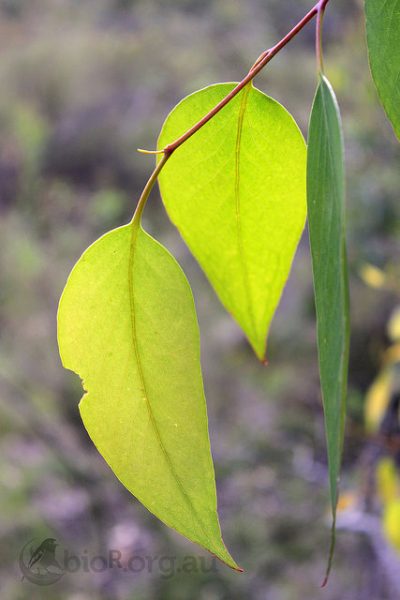The word eucalyptus is derived from the ancient Greek word eu, meaning good or well, and calyptos, meaning covered. When early explorers arrived in Australia, they collected samples of various plants, including eucalyptus (from which we get eucalyptus oil), and sent them back to England for study.
In 1792, French botanist Charles Louis L’ Hertier de Brutelle named the genus because of the unique cap that covers the flower before the plant opens. His specimen was named Eucalyptus obliqua, while its common name is Messmate. His research on eucalyptus can be found in his book, English and Rare Plants in Gardens Near London.

A pharmacist, Joseph Bosisto arrived in Australia in 1848 in a failed attempt to mine for gold. However, he found studying Australian plants much more interesting. He discovered that the eucalyptus plant’s main components — cineol, alpha-pinene, and limone — had antiseptic properties, while its tannins and flavonoids had anti-bacterial properties. He established Australia’s first eucalyptus distillery in 1852, and his company continues to sell eucalyptus oil and other products made from plants for health and cleaning purposes.
Bosisto led the way for eucalyptus oil to become Australia’s first export. However, after World War II, workers started to leave the industry in search of higher-paying jobs. Also, sales began to slump as overseas producers started competing with the Austrian market.

Australia is the largest producer of pure eucalyptus oil
Australian eucalyptus seeds were planted in Africa, South and North America, Europe, India, and China. However, only 20 out of the 800 varieties of eucalyptus trees contain enough oil to produce a commercially viable product. China claims to be the world leader in the production of eucalyptus oil; however, its product is actually a byproduct of eucalyptus oil and is largely composed of camphor. Australia remains the largest producer of pure eucalyptus oil.
Long before Europeans arrived, the indigenous population of Australia was well aware of the numerous benefits derived from native plants. They discovered that a fresh aromatic smoke for cleansing was produced when they burned eucalyptus leaves, and that leaves seeped in hot water could be used to ease fevers, chills, and sore muscles.

Early inhabitants of Australia beat the inner bark of the coolibah tree (Eucalyptus microtheca) to produce a paste that was used to treat snakebites. Insects that ate holes in a eucalyptus tree or leaf caused the gum to ooze out, which was a sugary sweet treat for Aboriginals. The river red gum tree (Eucalyptus camaldulensis) was used by Aboriginals to make didgeridoos, canoes, bowls, and other tools.
Today, eucalyptus trees have a variety of uses, including oil, firewood, and timber. Bees also make honey from the tree’s magnificent blossoms.

Eucalyptus oil also can be used to treat several medical conditions, including bronchitis, influenza, cold symptoms, low-grade fevers, coughs, sore joints, and stiff muscles. It can also be used as a disinfectant and as a treatment for fungal and oral ailments, such as gingivitis and ulcers.
Eucalyptus oil also has many household uses. It can be used to disinfect a toilet, remove bathroom mold, clean grease and grime, and remove bad odors. Dust mites can also be washed out of clothing using eucalyptus oil-based products. More information can be found at: https://www.bosistos.com.au








